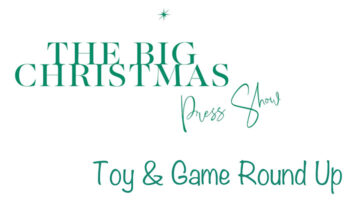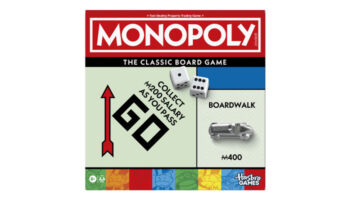A two-player game won the Spiel des Jahres this year… Is this category an exciting opportunity for designers and publishers – or a tough sell?

This year, the prestigious Spiel des Jahres award was won by Sky Team – designed by Luc Rémond and published by Scorpion Masqué.
Sky Team is a co-operative game for two players who play a pilot and co-pilot at the controls of a plane, working together to land an airplane in different airports around the world.
You do so by assigning dice to different spaces in your cockpit to do things like balance the plane, control its speed, extend the landing gear, contact the control tower – or even to drink coffee to improve your concentration.
With Sky Team’s success in mind, we asked designers and publishers whether this could spark wider interest in two-player games… And whether this category of game is a tough sell or exciting creative challenge?

Scott Brady, Designer of games including Hues and Clues and boop
I found it very interesting that Sky Team was honoured with a Spiel des Jahres award this year. For some time I’ve believed two-player games were underrepresented in the hobby, and this proves my supposition correct.
During the early months of the pandemic, I received numerous emails asking if there were two-player instructions for my newly released game, Hues and Cues. There were not, and although I tried, I could not come up with anything I felt good about publicly releasing. Because of the perceived demand for two-player games during the lockdown, I began working on the game which eventually became boop. When I released it for free on BGG under the name Gekitai, it immediately garnered a following internationally. It was this success which led to its eventual release into retail.
Having travelled the con circuit extensively for the past few years, I have noticed a trend among the attending shoppers. Most notably at UKGE and PaxU, there was a high percentage of young couples shopping together – they were in the market for games which they could play on date night. This change in the traditional demographic of con attendees hasn’t gone unnoticed. I’ve seen a number of publishers pick up on this and have started to issue titles specifically for this market.
Another change I’ve noticed, in my area at least, is the absence of larger local game nights. Cons excluded, board game days at game stores seem to be on the decline – both in frequency and attendance – in favour of pay-to-play TCG events and tournaments. This leads to more gamers playing at home in smaller groups.
I love seeing two-player games get their due. From the design side, there are many concepts we can implement which just don’t work at higher player counts. I’m excited to see those on the shelves soon. With the success of Sky Team, it means you’ll be able to buy them sooner than later.

Mathilde Spriet, Communications Manager, Helvetiq
Sky Team’s recent success in winning the industry’s most prestigious award is indeed a significant achievement, and it shines a spotlight on the potential of two-player games within the board game market. From our perspective as game publishers, this victory could certainly spark a greater interest in two-player games for several reasons.
Firstly, Sky Team’s recognition demonstrates that a well-designed two-player game can achieve critical acclaim and captivate the gaming community. This serves as an inspiration for both designers and players, showing that engaging and competitive gameplay experiences don’t necessarily require larger groups.
Secondly, the dynamics of the gaming market are evolving. With the rise of more personalised and intimate gaming experiences, two-player games cater to a niche – but dedicated – audience who appreciate the depth and strategic interaction that such games offer. The success of Sky Team can validate the viability of this niche, encouraging publishers to invest more in developing and promoting two-player games.
However, it’s important to acknowledge the challenges. Historically, two-player games have been a tougher sell compared to multiplayer games, primarily because they limit the number of participants and thus the social aspect that many gamers seek. Additionally, retailers may be hesitant to stock two-player games in large quantities, assuming a smaller market.
Despite these challenges, we see a growing area of interest. The increasing popularity of two-player games can be attributed to several factors, including the rise of board gaming as a mainstream hobby, the growth of gaming couples, and of course the covid period, which saw an explosion in demand for single-player and two-player games.
As publishers, we are committed to exploring and expanding this segment of the market. We believe that with innovative designs and targeted marketing, two-player games can indeed become a more significant part of the board gaming landscape.
Hidde van Dijk, Group Innovation Manager, Jumbo Group
There has always been a market for two-player games. At Jumbo, we have experience with Stratego – a game liked by many players. The advantage of any two-player game is that you can “easily” find a player that is on your playing level, where it will be more gradually difficult to find three or more players for a multi-player game. In my opinion, a two-player game must be simple to learn, but hard to master. This ensures players can grow into the game and keep being excited about playing it over and over again, while discovering new tactics.
So yes, I believe that Sky Team will rejuvenate the interest in two-player game. It’s not always easy to get a group together, and the advantage of having a co-operative game is that you can play as a team on your own level, which makes it even easier to get started.

Sen-Foong Lim, Game Designer (Two-player design credits include Akrotiri and Legend of Korra: Pro Bending Arena)
I think Sky Team’s Spiel des Jahres win might broaden the audience for two-player games, but those who primarily play at this player count know that there’s a solid crop already available.
7 Wonders Duel and Splendor Duel, for example, take the core experiences of their bigger brothers and distil them down to the smaller player count. Patchwork, Targi, Morels and Watergate prove that you can fit a lot of game in a little box. This says nothing of all the great two-player card games like Star Realms or Jaipur, more abstract games like Hive, Shobu or Onitama, or combat-centric games like Space Hulk or the Unmatched series. Every board game forum has at least one thread a week asking for the best two-player games available and it’s no surprise that Sky Team is highly touted amongst the recommendations.
In designing any game, my key focus is the player experience. I don’t typically set out to design a two-player game. Instead, I consciously choose to make it strictly for two players because that specific player count is integral to the experience. In a game like Sky Team, being two-players makes sense – there’s a pilot and co-pilot.
Akrotiri – which is currently out of print – was originally a four to five player game… It was reduced to its two-player incarnation because the publisher loved playing so much that they didn’t want to wait longer than they had to in order to take their turn. Potential changes to board state and downtime are likely to increase as the number of players increases.
Two-player games are a niche player count within a niche hobby, but I think there’s a strong contingent of dedicated two-player game players – the market exists! I actually find two-player games easier to design and playtest initially, but perhaps more difficult to balance since there’s less margin for error with the small player count.
Here’s hoping that Sky Team’s success leads to a boom in this category!

JM Duparc, Creative Director, Identity Games
Two-player games are definitely something we’re interested in. I haven’t played Sky Team yet, but when we develop games, we really look at the two-player experience. Gaming is increasingly being embraced by adults – and the two-player game is already a brilliant pastime for couples. Our Medical Mysteries game was developed to be just as great a two-player experience as it is for bigger groups, especially because one of the great things about it is the discussion element.
There are games out there that are technically playable with two players, but they lose the essence of what makes the gameplay special, or what the inventor ultimately intended the experience to be – a game for more players. When we work on a game, we keep that in mind.
Ultimately, if the game is cool and innovative, there’s no reason why a two-player game should be less commercial than a game for bigger groups. In fact, it might be a bonus!

Danielle Reynolds, Project Director, Wacky Wizard Games
I’ve designed some two-player games in the past – mostly competitive abstracts – and publishers typically shut down the pitch immediately saying there isn’t an audience for that player count. So I would say it’s been a tough sell in general… Even though at board game cafes two-player games are always in high demand – and most couples that buy multiplayer games, regardless of player count, need the two-player version to be fun.
I’m hoping Sky Team’s success helps open publisher’s minds to taking pitches for two-player games. As a designer though, I wouldn’t currently recommend putting a lot of energy into designing something with that player count because it is such a tough sell.
Also, I think a big part of Sky Team’s success was the co-operative nature of the design. I’ve noticed party games and entry-level games have been moving towards co-ops more because they’re accessible to new gamers and add a layer of teamwork we aren’t seeing in the world as much anymore. I think that mash-up with a well-developed almost legacy style game is what made it so successful…
So, if you are going to be attempting a two-player game design make sure to make it a unique mashup of mechanics with a sellable theme. Or jump on the “Duel” bandwagon and make a streamlined two-player variant of a favourite game as a design challenge for fun! Whichever way you go, good luck!

Curt Covert, Owner, Smirk & Dagger Games
We have not shied away from two-player games. Some of our most popular titles are just for two – including SHOBU and Boop. We have another compelling two player deduction game slated for next year. Abstract strategy is very often based on a head-to-head competition.

Matt Fantastic, Creative Director, Forever Stoked Creative
Two-player games have always been simultaneously super popular and super niche – but when they hit, they can hit hard.
Tons of couples primarily play games with just each other, but it’s a lot easier to get together two to five or more players, so if a game is just as great at two as it is with more, that’s gonna make more publishers happy. That said, it can be a real bummer to open something that claims to be for two players but it’s mostly a janky variation of a game that was clearly designed for more… Sometimes that variant is amazing though, so it’s not always bad.
In terms of pitching, there are plenty of publishers happy to do two-player games, but also plenty that aren’t. I always ask when we get to them in the pitch deck because it’s so divisive as a product category.
For me, when looking at two player designs, I’m really trying to focus on systems that are intrinsically limited to two players. What can we do that just doesn’t work with more? Usually, it has to do with the push/pull back and forth in a zero-sum game, but there are all sorts of things you can only do with two.
In the ‘not really announced yet’ follow up to TEAM3, TEAM2 – a hot scoop! It’s coming in 2025 and we’re stoked! – we came up with more than 30 different variations on how one player can communicate the building plans to a single other player… Who then does the building. So, if you’re familiar with TEAM3, imagine that as one modality of information transfer, while TEAM2 has over 30 – which is a lot!
It meant we got to do things that are just fundamentally impossible with more, like ‘drawing’ on someone’s back with a finger or using mirrored movements. It was a ton of fun working through them all and thinking about what we can do with two players specifically.
Another game we did recently – Trash Talk – was originally conceived as a two-player game, but publishers kept asking if we could add multiplayer. When we signed with Friendly Skeleton, we all worked on how to make that happen… It turns out that the game is still great with two, but adding more creates a whole different layer that’s really fun. That is a case where being flexible and open to trying anything really paid off!

Fi Murray, Founder, Making Things Studio
Across all game categories, we’ve seen a demand for two-player games – and/or starting with a minimum of two players – increasing, so they’ve certainly got mass-market appeal. The ‘two-player plus’ opens up playability for friends living together, date nights, siblings, coffee shop catch ups, older players, pool-side and so on…
I love watching Games4Two’s reviews to spot new titles to try out. They’re often playing games that require more than two players but hack the rules to make it work. It really clearly brings focus to what the game is all about… Usually a competitive, emotive, funny moment of them duelling and bantering… A sentiment in casual games is if it’s fun to watch, it’s going to be fun to play!

Adam Hocherman, Co-Founder, Wayfarer Games
This is an area that I’ve been thinking about since the debut of Watergate from Capstone Games, who I feel really embraced the two-player game as a market all its own back in 2019. Both Watergate – in which you play as either Nixon or as the “The Press” – and Sky Team are incredibly clever concepts that lend themselves well, thematically, to a two-player game.
What’s attractive about designing games for two players, specifically, is that I believe it scratches a niche within the strategy sub-category of games. At the cons I have observed a lot of younger couples walking the show who share a passion for this hobby. Many, but not all, games designed for two to four players play really well at a two-player count.
It doesn’t even matter – marketing a “two-player game” is going to attract an audience who, perhaps, has not yet started a family and is potentially on the younger end of the more traditional strategy games market demographic today. There is a market opportunity here.

Carine Rosalia, Toy & Game Inventor, Lunch Squares Studio
Sky Team looks like a captivating game – congrats to Luc Rémond and Scorpion Masqué! Quick and highly replayable two-player games are my favourite as a customer and something that I want to develop more as an inventor because it makes it that much easier for people to play anytime, anywhere. You don’t need to organise a group of friends, or rally all the family members. You can play a round to develop a bond with someone you are getting to know or spice up the day-to-day with someone you see often. Just like people impromptu burst out into a song in musicals, maybe people should break into games in the middle of a conversation! I hope that many publishers will see the two-player market as a growing opportunity.
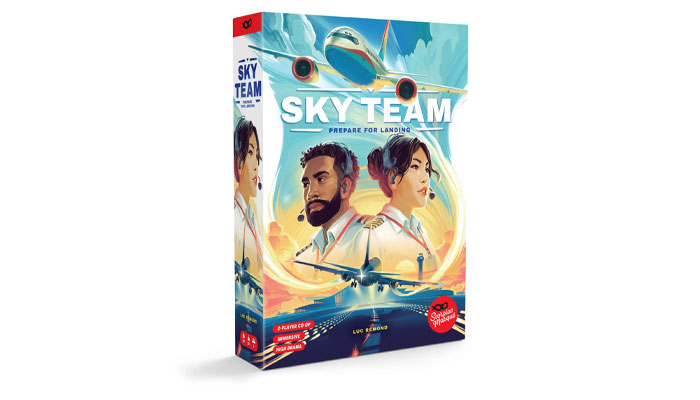
Barry McLaughlin, Co-Founder, Barry & Jason Games and Entertainment
Sky Team looks amazing and I’m happy that it won this award! I have always been a fan of two-player games because I spend the most time in two-person scenarios…. With my wife Jade or with my work wife Jason. So, anything that can be played by just two people or has a two-player option is perfect for me!
As far as designing these kinds of games, we always have a two-player option in mind, though we have yet to design a game exclusively for two. But clearly there is demand, as evidenced by the popularity of the content creators Games4Two. So, I think we’re gonna dive in and see what we can create for just two players. I’ll get back to you next year!
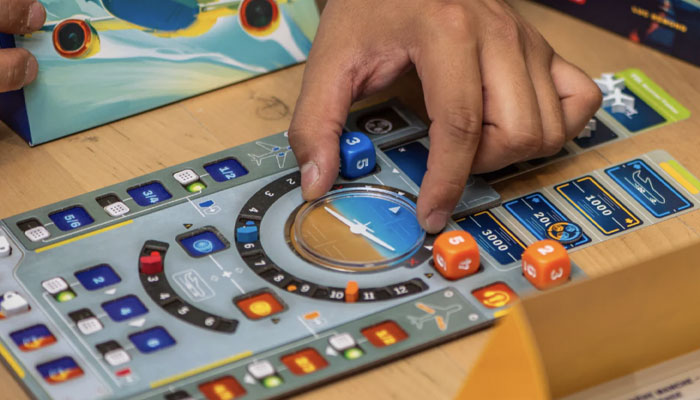
Artūrs Perepjolkins, Inventor Relations Manager, Brain Games
I don’t think that Sky Team’s success this year will lead to a greater interest in two-player games. It has always been quite a niche genre of games that is, was and will always be very limiting. You can’t really play two-player-only games in a family setting… Unless someone takes on the role of curating the process, but that isn’t really “participating in the act of playing”. Additionally, if you invite people over and would like them to try this great hobby called “modern board games”, you can do that more easily with a four or four-player game than with a two-player game.
Having said that, I do think that two-player-only games are a great “next step” type of game – one that allows people get more acquanited with the modern hobby and what is there on offer. Two-player games offer a personalised challenge for a couple, parents or siblings. It’s a very confrontational way to play and you can’t really be nice in such games to others, because it’s either you or me.
- Two-player-only games have always been a niche sub-genre in the hobby that is already very niche.
- Two-player-only games limit the oportunity to expand the potential customer base with new enjoyers of the hobby, because of the limit of being able to get only one new person to try the game – given that the second player teaching it also partakes.
- Two-player-only games are by design very confrontational because it’s either you winning or the other player. There is no other option. And in case of a co-op game, if a mistake is made then there are only two people to blame… The other player or yourself – and people will not be blaming themselves!
However, I do think that Sky Team’s success highlights the importance of making games thematic and focusing more on real-world themes, rather than fantasy or sci-fi. Such themes intrigue more people and in return help the games to spread – and sell – better, as well as make the hobby more popular in result. I think that we already have had a few games with a similar success story. Even by looking at this year’s Spiel des Jahres nomenees across the main award and the Kennerspiel des Jahres we can see more real-world themes… Darwin’s journey and observations of different animal species, the challenges of flying an airplane, a world wide ecological problem that influences everyone and everyone needs to take action in return…
I also think that Wingspan’s success was largely due to it’s unusual thematic choice: bird watching. It’s not something that might excite people to do in real life, but it sure does sound intriguing to get to know more about different kinds of birds and just maybe actually stopping for once in the tech-filled world to think more about the nature that surronds us.
So all-in-all, I do think that Sky Team will have an influence on future games, but from the perspectives of theme choice, rather than player count. Doing a new niche game – like a two-player game – in a niche market that is oversaturated with production is a huge risk to take and we don’t see or hear publishers being ready to take such huge risks, especially when it is not needed. Oh, but I do believe that we will see more profession themed games in the next three years to come and I am very intrigued to see what will become of this.
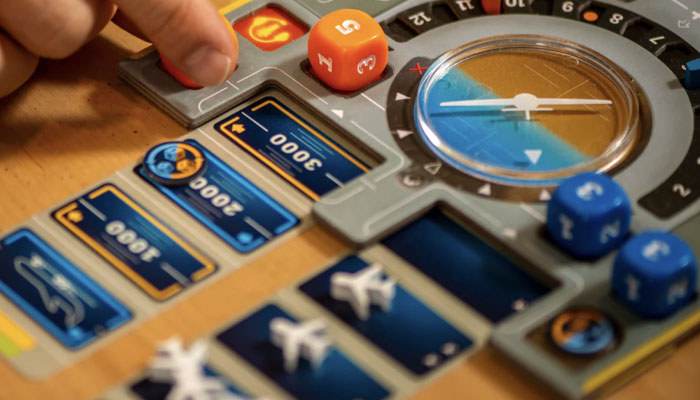
Liat Waks, Co-Founder, Incredible Us
I believe Sky Team’s success as a cooperative game for two players can spark a greater and wider interest in two-player games and in cooperative games… But for game inventors, there are many challenges in order to invent a successful cooperative two-player game.
The success of Sky Team is a strong indicator that there is a significant market for well-designed two-player games. Historically, two-player games – like chess and certain card games – have always had a place in gaming culture, but modern cooperative games bring something fresh to the table. They offer intense, focused interactions that multi-player games often can’t match. The growing appreciation for these experiences suggests that more players are seeking meaningful, collaborative gameplay. Also, a lot of game influencers on social media are couples playing games and trying challenges as two players – either competing against each other or working together to accomplish a goal.
Some design and innovation considerations when designing for two players…
Balance: Designing a two-player game requires a delicate balance. Each player needs to feel their contribution is vital. In Sky Team, the distinct roles of pilot and co-pilot create interdependence, making every action meaningful. This approach not only enhances the game’s theme but also ensures that both players are engaged.
Replayability: A key consideration is ensuring high replayability. This can be achieved through variable scenarios and scalable difficulty. Sky Team uses dice assignment to create dynamic challenges that change each game, keeping the experience fresh and unpredictable. Designing for replayability means considering how to keep the game engaging over multiple sessions. An app can also create more scenarios for a longer period of time.
Engaging Theme: The theme of Sky Team is compelling. It draws players into a scenario that requires teamwork and quick thinking. For any two-player game, an engaging narrative that aligns with cooperative mechanics can significantly enhance the player experience. The theme should be integrated with gameplay to create a cohesive and immersive experience.
Interaction: In two-player games, continuous engagement is important. Sky Team ensures that both players are constantly involved, with minimal downtime. The game mechanics should facilitate ongoing interaction, requiring players to communicate and strategise together. This not only keeps the game lively but also strengthens the cooperative aspect.
Inventing a two-player game is an attractive creative challenge. It allows us to explore deep, strategic interactions and create intensely focused experiences. The direct collaboration required in cooperative games like Sky Team can lead to innovative game mechanics and storytelling techniques. And while the market for two-player games is smaller than for multi-player games, it is dedicated. Games designed specifically for two players often appeal to couples, roommates and close friends.
The success of Sky Team suggests that if the game is well-designed and engaging, it can carve out a significant niche. The challenge lies in standing out in a crowded market and convincing players of the unique value of a two-player cooperative experience.
Tom Emelo, Relatable’s Chief Strategy Officer
At Relatable, we’ve seen a growing demand for these intimate, engaging experiences – which is why we’re excited about our Ultimate 2 Player Game coming out this October. When considering a two-player game for licensing, we prioritise:
Engagement and Replayability: The game must provide a rich, repeatable experience.
Theme and Appeal: A compelling theme that resonates widely.
Market Trends: Aligning with current trends and addressing market gaps.
Two-player games present unique opportunities despite the challenge of standing out in a multiplayer-dominated market. Sky Team’s win highlights the growing potential in this space.
–
To stay in the loop with the latest news, interviews and features from the world of toy and game design, sign up to our weekly newsletter here






